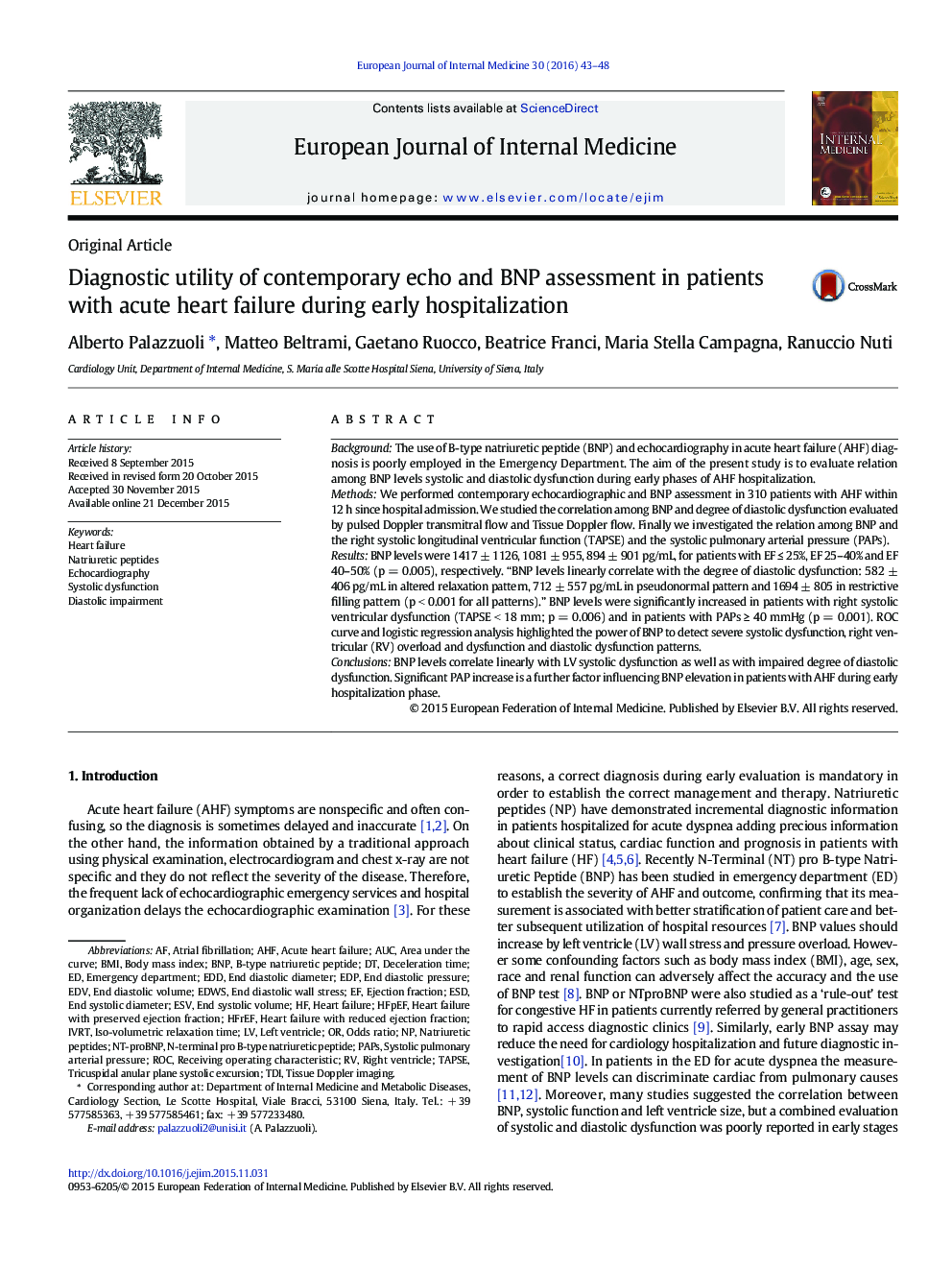| کد مقاله | کد نشریه | سال انتشار | مقاله انگلیسی | نسخه تمام متن |
|---|---|---|---|---|
| 3465902 | 1596536 | 2016 | 6 صفحه PDF | دانلود رایگان |

• Combined BNP and echo assessment in early hospitalization is a useful tool for patient screening.
• BNP correlates with both severe systolic dysfunction and degree of diastolic impairment.
• A BNP cut off > 809 pg/mL is highly suggestive for left ventricular filling pressure increase.
• Right ventricular systolic dysfunction and pulmonary pressure influence BNP increase.
BackgroundThe use of B-type natriuretic peptide (BNP) and echocardiography in acute heart failure (AHF) diagnosis is poorly employed in the Emergency Department. The aim of the present study is to evaluate relation among BNP levels systolic and diastolic dysfunction during early phases of AHF hospitalization.MethodsWe performed contemporary echocardiographic and BNP assessment in 310 patients with AHF within 12 h since hospital admission. We studied the correlation among BNP and degree of diastolic dysfunction evaluated by pulsed Doppler transmitral flow and Tissue Doppler flow. Finally we investigated the relation among BNP and the right systolic longitudinal ventricular function (TAPSE) and the systolic pulmonary arterial pressure (PAPs).ResultsBNP levels were 1417 ± 1126, 1081 ± 955, 894 ± 901 pg/mL, for patients with EF ≤ 25%, EF 25–40% and EF 40–50% (p = 0.005), respectively. “BNP levels linearly correlate with the degree of diastolic dysfunction: 582 ± 406 pg/mL in altered relaxation pattern, 712 ± 557 pg/mL in pseudonormal pattern and 1694 ± 805 in restrictive filling pattern (p < 0.001 for all patterns).” BNP levels were significantly increased in patients with right systolic ventricular dysfunction (TAPSE < 18 mm; p = 0.006) and in patients with PAPs ≥ 40 mmHg (p = 0.001). ROC curve and logistic regression analysis highlighted the power of BNP to detect severe systolic dysfunction, right ventricular (RV) overload and dysfunction and diastolic dysfunction patterns.ConclusionsBNP levels correlate linearly with LV systolic dysfunction as well as with impaired degree of diastolic dysfunction. Significant PAP increase is a further factor influencing BNP elevation in patients with AHF during early hospitalization phase.
Journal: European Journal of Internal Medicine - Volume 30, May 2016, Pages 43–48